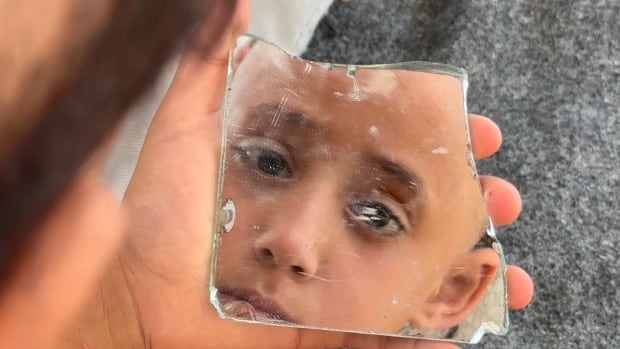
A year into the Israel-Hamas war, foreign journalists have still not been allowed inside Gaza except on a limited number of supervised tours organized by the Israel Defence Forces. In the absence of that coverage, citizens and journalists inside Gaza have picked up their phones and cameras to document the devastation that the war has wrought and their resilience in the face of it.
Himself displaced — together with his pregnant wife and young son — freelance videographer Mohamed El Saife, 33, has been heading out into the ruins of what used to be vibrant communities every day of the past year to document the lives upended by the war.
He has ventured into hospitals overwhelmed with dead and injured and struggling to manage wartime challenges such as malnutrition, amputations and polio; schools and other spaces turned into crowded shelters and tent camps for the displaced; and the vast areas where streets, stores and homes once stood, now reduced to rubble.
These are some of the stories he’s covered for CBC News.
Rush to leave through Rafah
In November 2023, about a month after the Oct. 7 Hamas-led attack on Israel that instigated the war, the Canadian government managed to get hundreds of Palestinian Canadians out of Gaza to safety in Cairo via the Rafah border crossing. Those lucky enough to have a passport went on to Canada to reunite with their families. But many had to leave relatives and loved ones behind. Bureaucratic delays and fighting over control of the border crossing led to long lineups and chaos at the border, with some who had travelled long distances turned back when the border suddenly shut again. Administrative hurdles would continue to frustrate Canadians trying to bring loved ones to Canada.
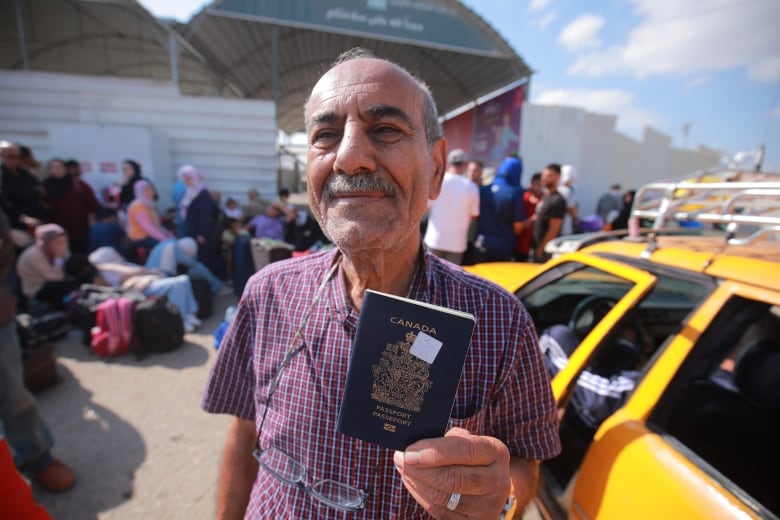
(Mohamed El Saife/CBC)
Hospitals at breaking point
Hospitals in the Gaza Strip have been central to the story of the war. Not only have they been put under tremendous stress as they receive mounting numbers of dead and wounded, but they are also a flashpoint in the battle between the IDF and Hamas. Even though hospitals should be protected areas under international humanitarian law, Israel claims some are used by Hamas to hide weapons and militants and has raided several of them in the past year. Surgeons like these at Al Najjar Hospital, meanwhile, have had to operate without essential supplies, meaning women are giving birth without painkillers, children are undergoing amputations without sufficient anesthetic and there are not enough antibiotics to treat the infections cropping up because of the unsanitary conditions people are living in.
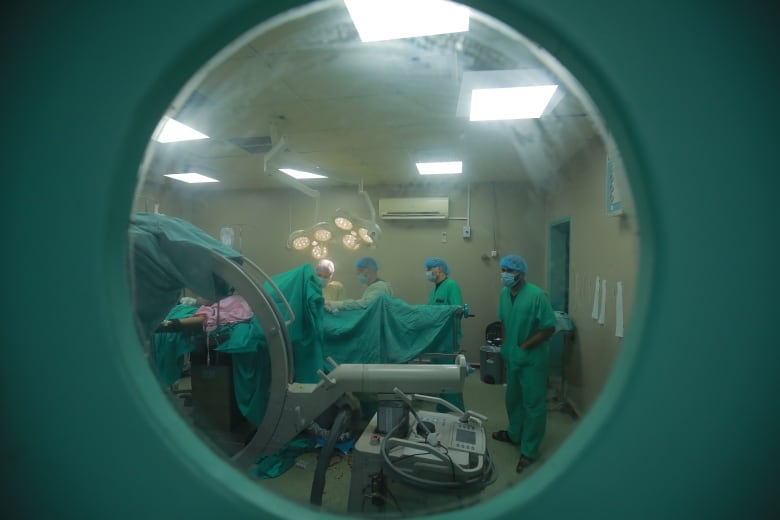
(Mohamed El Saife/CBC)
Breaking fast amid the rubble
As the Israel-Hamas war continued through the winter, Muslims in Gaza marked Ramadan, the month of fasting, as well as they could. Abu Mustafa Naji and his wife would break their fast in the evening on a small table amid the rubble of their home. The meals were meagre, but the couple did their best to honour the tradition of the iftar meal. As darkness set in, they cleared the makeshift table and made their way to a tent they were sheltering in.
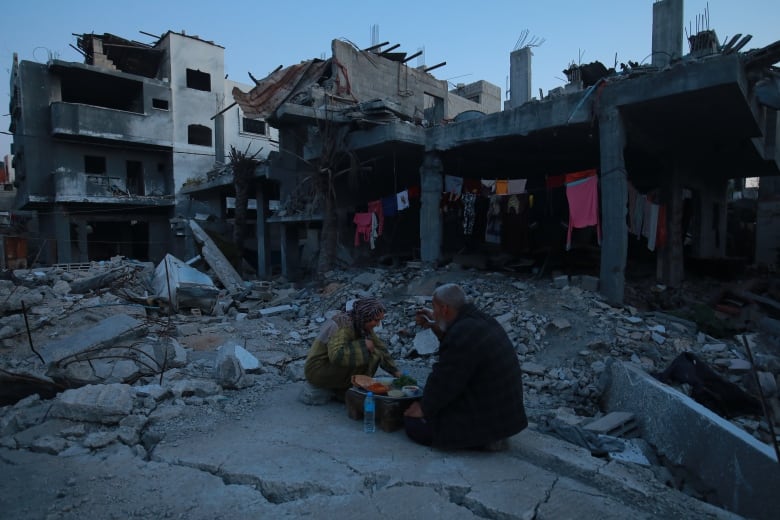
(Mohamed El Saife/CBC)
Heart-wrenching stories of hope and loss
The breadth of heartbreaking stories of personal loss in Gaza over the past year has been overwhelming. The toll has been especially devastating for young children. Earlier this year, UNICEF estimated that 17,000 children have been orphaned or separated from their families. Throughout the year, El Saife has met many children who’ve remained resilient in the face of incredible trauma and loss. In April, he covered the story of Sabreen Roh, which captivated many around the world. The baby was born 10 weeks premature after her mother died in an airstrike. Doctors performed an emergency C-section to save Sabreen, but the baby did not survive, El Saife later learned.
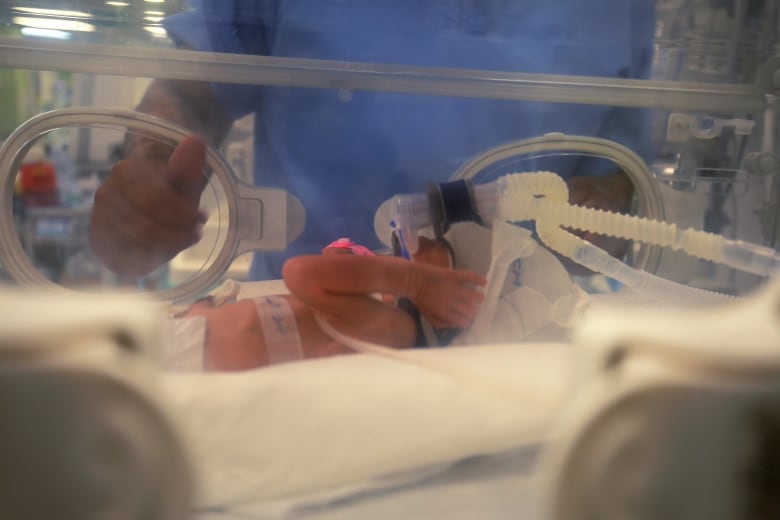
(Mohamed El Saife/CBC)
No safe place in Gaza
The incursion into Rafah near the Gaza-Egypt border was a pivotal moment in the war. In May, the Israel Defence Forces moved into the southern tip of the Gaza Strip, where hundreds of thousands of civilians were sheltering after being displaced from other parts of Gaza. This meant they had to pack their belongings again, many for the third or fourth time, and find a new safe place to go. Increasingly, Gazans feel there is nowhere that is safe from the war.
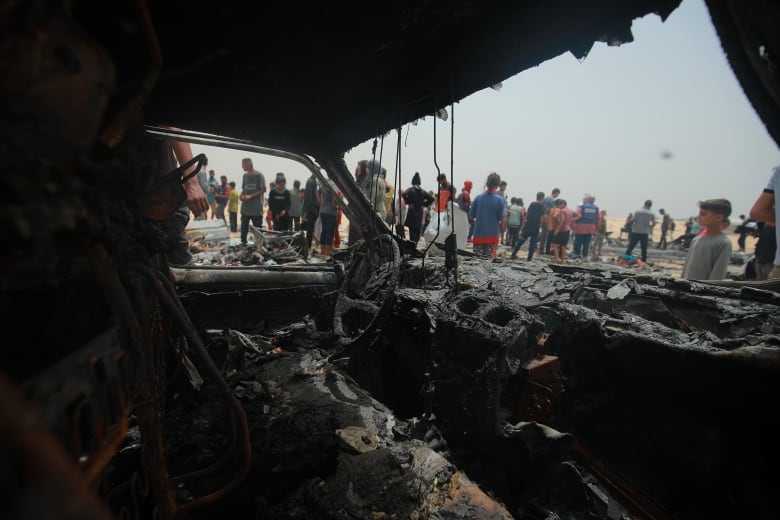
(Mohamed El Saife/CBC)
Child amputees
The desperate state of Gaza’s health-care infrastructure and the nature of the injuries sustained in Israel’s bombing campaign have meant that doctors have been forced to do amputations on young children whose limbs may have otherwise been spared. In January, El Saife interviewed Moustafa Shehda while he was selling trinkets on the side of the road. The 12-year-old had one leg amputated from below the knee after suffering injuries from a strike while he was visiting his uncle in northern Gaza with his family.
(Mohamed El Saife/CBC)
Back to school
In September, it was back to school for kids in Canada, so we asked El Saife to see if kids were going to any sort of classes in Gaza. That’s when we came across Israa Wadi, a teacher who was giving lessons in a school that had been turned into a shelter for the displaced. Logistics were difficult, as it meant the family living in the classroom had to leave the space and move their belongings aside, but Wadi placed a chalkboard at the front of the class and gave the space some semblance of its former use.
(Mohamed El Saife/CBC)
1st confirmed polio case
El Saife and CBC were hearing that polio was spreading across the Gaza Strip and that a baby was the first confirmed case. After weeks of searching, El Saife received a call: Abdul Rahman Abu Al-Jidyan’s father wanted to do an interview to tell the world that his son had contracted the disease. By August, the 11-month-old had already lost movement in his left leg. He had not yet received the vaccine.
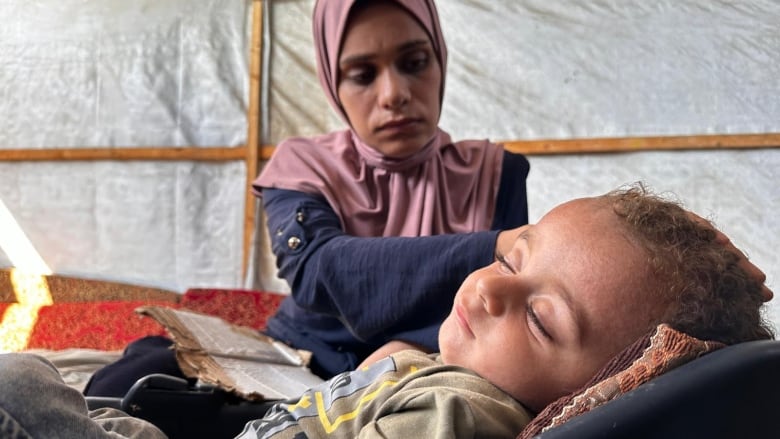
(Mohamed El Saife/CBC)
Not enough food
As the war ground on, the search for food came to dominate many Gazans’ lives and the risks of starvation and malnutrition increased. In July, a group of UN experts warned that famine had spread across Gaza. Ghanima Jumaa’s nine-year-old son, Younis, was supposed to leave for Turkey to be treated for malnutrition, but with the Rafah border closed, the trip was put on hold. Younis also has quadriplegic spastic cerebral palsy. When El Saife interviewed Ghanima in June, Younis lay still next to her on a thin mat atop a shoddy hospital bed at the Nasser Medical Complex in Khan Younis, his tiny body reduced to skin and bones.
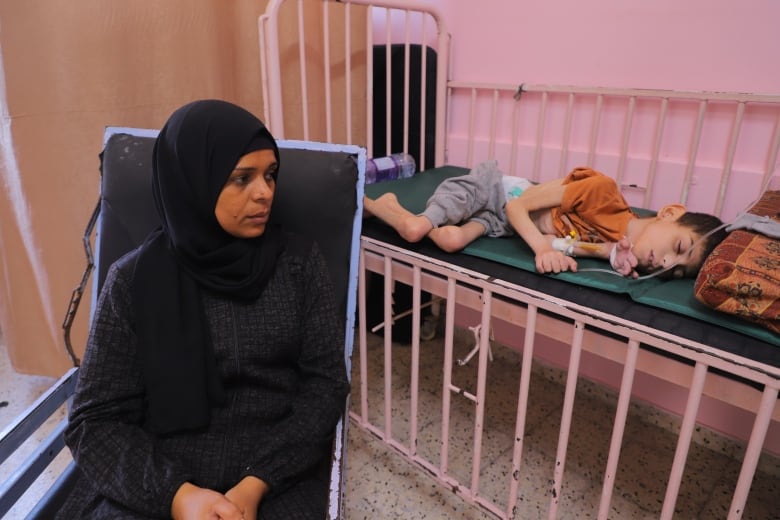
(Mohamed El Saife/CBC)
Leaping and flipping through wreckage
Amid the many dark stories coming out of Gaza, there are also moments of light. Even a war can’t quite extinguish a child’s insatiable appetite for play. Wassim Naqqar, 11, did not let a lack of proper gym facilities stop him from practising gymnastics. He took to the rubble in a refugee camp in southern Gaza to show off his backflips and handsprings under the watchful eye of his father, who trains 60 kids in gymnastics and parkour. Naqqar had dreams of competing internationally, but the Israel-Hamas war put those on hold.
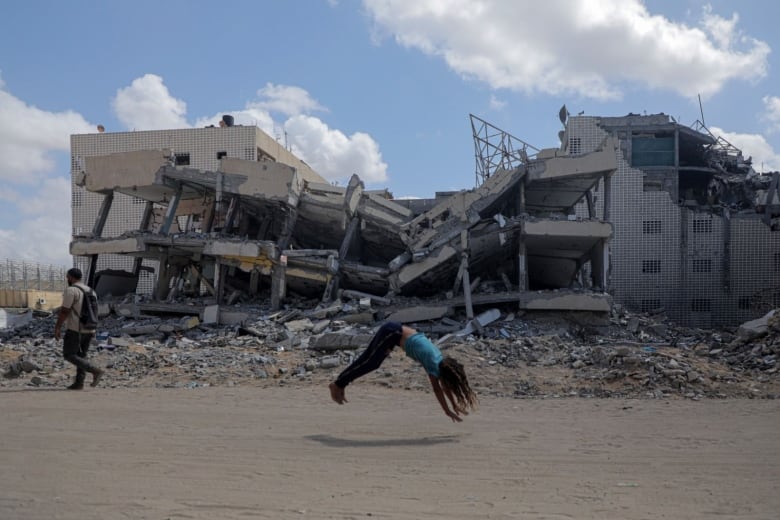
(Mohamed El Saife/CBC)
War artist
The war has also not extinguished people’s desire to create art. Artists have used what materials they can salvage to continue practising their passion. Basil Al-Maqousi, 55, was an artist known for his use of colour before the war but now draws with charcoal, saving any paint he can find for the children he gives ad hoc art classes to in the displacement camp in Deir al-Balah, where he is staying. He was one of several Gazan artists featured in an exhibition earlier this year at the Palestinian Museum in Ramallah in the occupied West Bank.
(Mohamed El Saife/CBC)